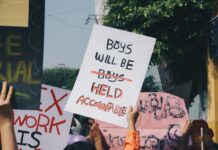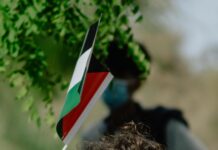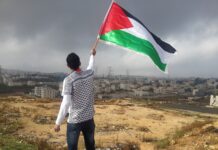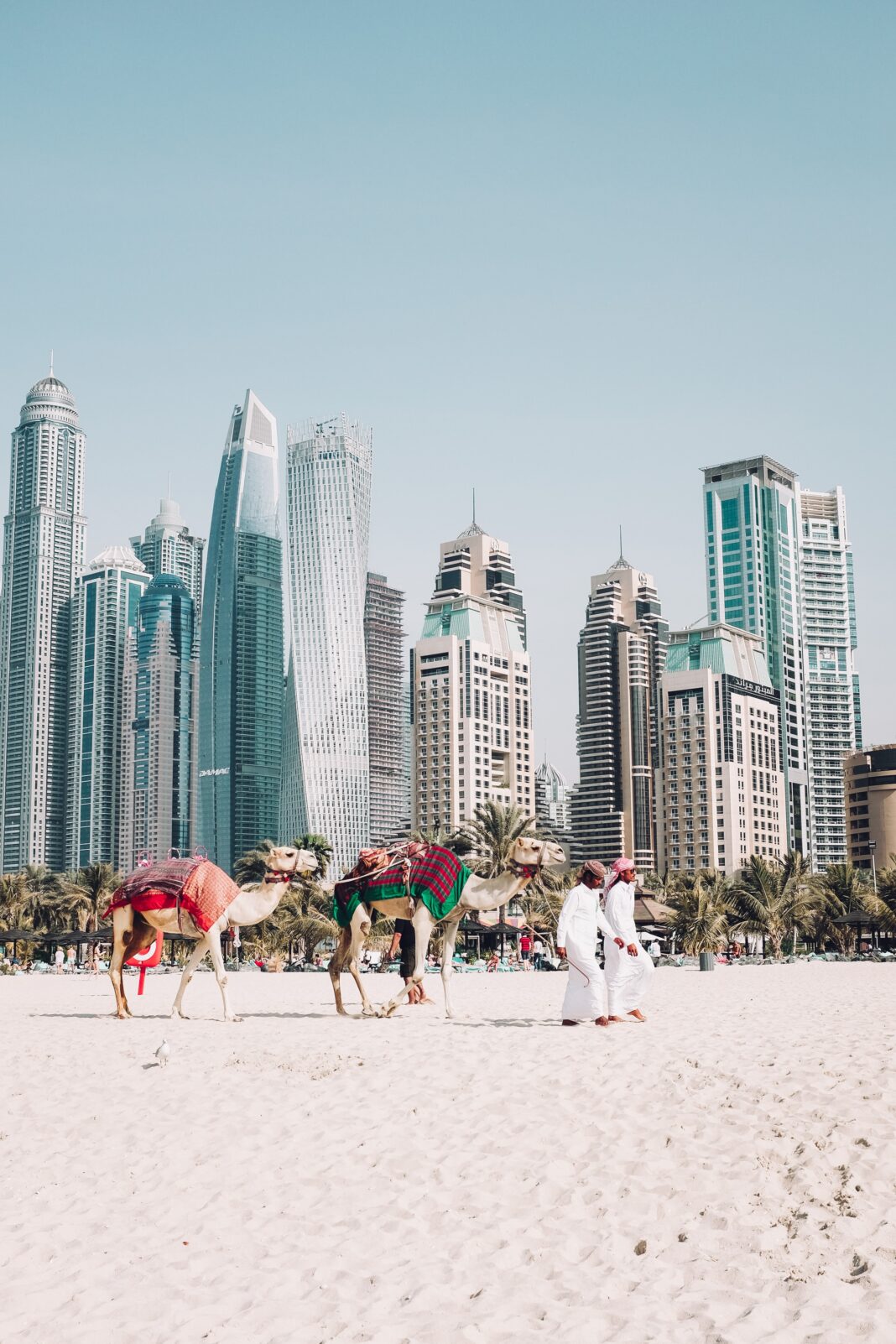EDITOR’S NOTE:
This article has been reposted from The Geopolity: https://thegeopolity.com/2021/02/03/the-future-of-the-middle-east-3/
A decade has passed since the Arab Spring.
Separated by nearly 2000 miles, an eruption of mass protests in Tunisia lit a fuse that travelled through North Africa into the heart of the Levant within weeks. After decades of repression, Muslims became emboldened by what they saw in their neighbouring lands; when states rose up before them, they followed suit. Initially, Muslims marvelled at the impact of street politics – indeed, a precedent had been set.
In our Geopolity series, we investigated the similarities and contrasts, the key players, the motives of the people and the extent of foreign intervention of each participant country of the Arab Spring. We now ask, what does the future hold for the people? Will they remain satisfied with the removal of hated heads of state or is there a new realisation that secular institutions must be completely uprooted for any meaningful change?
Is the revolution dead or have the seeds of a new uprising already been planted?
A decade after the anniversary of the uprisings in Tunisia, police brutality and unemployment worsened but the pandemic continues to drive young protesters onto streets. Tunisia has been beset by political infighting. The police force remains almost entirely unreformed since the revolution that its own actions helped to spark.
Even before the pandemic destroyed the country’s vital tourist industry, Tunisia’s economy was struggling. Unemployment – a key driver of social unrest – increased to 36% among 15 to 24-year-olds, a prominent demographic among those now demonstrating. [1]
Despite being lauded as one of the Arab Spring’s successes, instability has continued to rock Tunisia in the past decade, as its successive secular governments are unable to close the increasing gap between the rich and poor. In 2019 and 2020 protests broke out across several Arab states again.
The unresolved issues from 2011 were also noted by Mona Yacoubian, senior adviser at the Institute of Peace, who stated in the Carnegie Survey: “The Arab Spring never died. It just went dormant, overtaken by the brutality of events in Syria, Libya, Yemen, and Egypt. The roots of this second wave of mass protests hearken back to the 2010-11 Arab uprisings. Yet, they have spawned something different. Absorbing some of the lessons from the earlier uprisings, the 2019 protests have evolved.” [2]
But how serious are these protests?
Crackdowns and Cronyism
In Egypt, we find a second phase of the revolution is beginning to develop as Egyptians have the feeling that their revolution wasn’t completed properly and that nothing was going to change. Since the 2011 revolution the Egyptian economy has gone from bad to worse. Unemployment is up, so is the budget deficit, job creation is virtually non-existent and the Egyptian pound has lost much of its value. Matters are made even worse by the general lack of security in the country. The old ruling class and same cronies are back in control, this time with a military president; and they are using force in a greater fashion than they were the first time round.
The first Tahrir Square revolution was predominantly peaceful as the government crackdown was not as severe as expected. However, over the years as the revolutions in Libya, Syria and Yemen shuddered into war, Egypt’s military-backed government helmed by President Sisi widened its crackdown. We are now seeing a greater use of security services under Sisi, giving protestors less choice about peaceful activism being an option.
In neighbouring Libya, armed groups in Tripoli linked with the Government of National Accord (GNA) have used lethal force to disperse largely peaceful anti-corruption protests in late August 2020 and arbitrarily detained, tortured and disappeared people in the capital. [3]
The most brutal response against the people of all uprisings have been in Syria; we have seen the full fledged use of Bashar al-Assad’s army and use of chemical weapons, the intervention of Hizbollah from Lebanon and the Iranian Revolutionary Guards Corps (IRGC), the aerial bombardment from Russian jets, US funding of armed groups, European brokering, Turkish and Saudi mediation with rebel factions and last but not least, the mysterious entry of ISIS which delegitimised the struggle of the people internationally. The scale of effort to prevent Muslims from controlling their own destiny, who rejected not only Bashar but talks of transitional governments, has been astonishing. As a result, at least 6.2 million ordinary people have had to leave their homes inside Syria, while another 5.6 million have left to go abroad. [4]
Yet it doesn’t look like the fighting is likely to end any time soon, as there is still a big power struggle going on in the region. Broadly speaking, there is a stalemate between Bashar and the Sunni population. This means that the government forces and the rebel groups are unable to defeat each other or agree on the future. Something has to give.
Across the Gulf in Yemen, a proxy war by international players to wrest control rages on. Northern Yemen is still held by the Houthis, who ousted the government from power in Sanaa in late 2014, prompting the Saudi-led coalition to intervene months later. This didn’t end the struggle. In January this year, tens of thousands of Yemenis marched in Sanaa on Monday, heeding a call by the rebel Houthi movement to condemn the US for labelling it a terrorist group and backing the Saudi-led military coalition that is battling it.
The protesters filled a wide avenue in the Houthi-held capital, many holding banners that read: “America is the mother of terrorism”. [5] It seems like the Arabs are awake to the players that prop-up their oppressive regimes.
Syria and Yemen aside, why are new waves of protests intensifying now?
Rentier System, Cosmetic Reforms Under Threat
Social discontent has been mounting for years and the same reasons that led to the 2011 uprisings are still present in the region. The drop in oil prices in Algeria in mid-2014 for example has led to a deterioration in the economic situation – by 2019 the government was no longer able to buy social peace as it had in 2011.
Even for states that missed the winds of mass protests such as Saudi Arabia, oil revenue which became an effective tool to placate powerful tribes and citizen’s economic grievances, has now been lost. Although Saudi is aggressively pushing an agenda for reforms towards tourism, technology and domestic spending: this too may not be sustainable with the volatility of the oil market and budgeting issues that arise from it.
Despite other Arab states like Algeria nearly being toppled in 2011, most of them still have not internalised that the rentier system that keeps them in power, backed by oil prices when they are high and patronage underpinnings, is no longer viable. Algeria survived the protests and became the “Algerian Exception” during the Arab Spring as memories of its ten year, bloody civil war still weighs heavily on the Algerian national consciousness. The government was cautious, taking a light handed approach and passed a series of laws to address the concerns of the population. However, the outbreak of protests in 2019 halted only temporarily by the COVID-19 pandemic, indicate that the will to topple the regime is now strong. Algeria has not witnessed such momentous events since independence from French colonial rule in 1962. How will regimes placate the people now?
Ultimately, in the majority of Arab states there have been no real economic reforms, nothing to seriously address corruption, improve governance, and create jobs. Handouts have dried up and superficial reforms have failed to quell the resentment – now a more experienced group of protesters are back on the streets.
Demographic Politics
It is said that two important factors help determine if a population is ready for mass protests. One, a society without a middle class leaving the majority with very little to lose, and two, a large youthful population that still have the spark of hope and greater aspirations. The Arab world has both in abundance.
In Egypt, approximately 61% of the population is under the age of 30 with a median age of 24 years. In Yemen this is 20 years. Contrast this to the US and UK at 38 years and 40 years respectively. Young people are powerful catalysts for social and economic development and change.
Many of the youth find that growth has slowed, public debts have risen, and unemployment is higher. Ruling regimes now have fewer resources to finance their clientelism. While a yearning for dignity fuelled the earlier uprisings, today’s protests are propelled much more by primal instincts of hunger. Under these post-pandemic conditions, it seems inevitable that the yearning for radical change is only about to get stronger.
During the first Arab Spring, the masses were easily appeased by the removal of key figureheads. The sheer longevity of dictatorships meant that most Muslims had simply not known any other leaders their whole lives. To see them step down, flee or be killed was in itself a surreal experience. However, this proved to be a false dawn as the problems only intensified – the deep state was real and here to stay. Now, there are lessons to be learnt. A new wave of protests from those who lived throughout 2011 seem to indicate that Muslims have become wiser in their approach. This time they see the role international players have in propping up such leaders. They are beginning to see the relationship between the military top brass and the leadership, the secret services and judicial system. History is on the march again.
A Perfect Storm is Brewing
During the first Arab Spring, the US played a discrete but significant role in influencing the direction of the outcome. However, in the spirit of an old saying, the US has to get it right every single time to prevent protestors from achieving a result that will reverberate across continents – for Muslims weighed down by oppressive systems, they only have to get it right once.
Economic conditions across the board have gone from bad to worse. Countries like Libya have one of the highest unemployment rates in the world. Regime crackdowns are more severe than prior to the first Arab Spring. Superficial reforms and new governments have done little to quell the suspicion that the old guard is still in control. The regime’s financial resources to keep peace are drying up. The population of youth willing to sacrifice and not accept what their parents lived through is only growing. The generation who lived through 2011 have learnt some important lessons. Foreign imperial states are overstretched and becoming exhausted with their own problems at home, and the coronavirus pandemic is acutely affecting these sensitive circumstances.
Protests are already breaking out and this time they say things will be different.
You can find the full series here – The Arab Spring: A Decade On
References
[1] https://www.theguardian.com/global-development/2021/jan/27/things-are-getting-worse-tunisia-protests-rage-on-as-latest-victim-named
[3] https://www.hrw.org/news/2020/09/10/libya-armed-groups-violently-quell-protests#
[4] https://www.bbc.co.uk/newsround/16979186
[5] https://www.reuters.com/article/us-yemen-security-usa-idUSKBN29U20T












